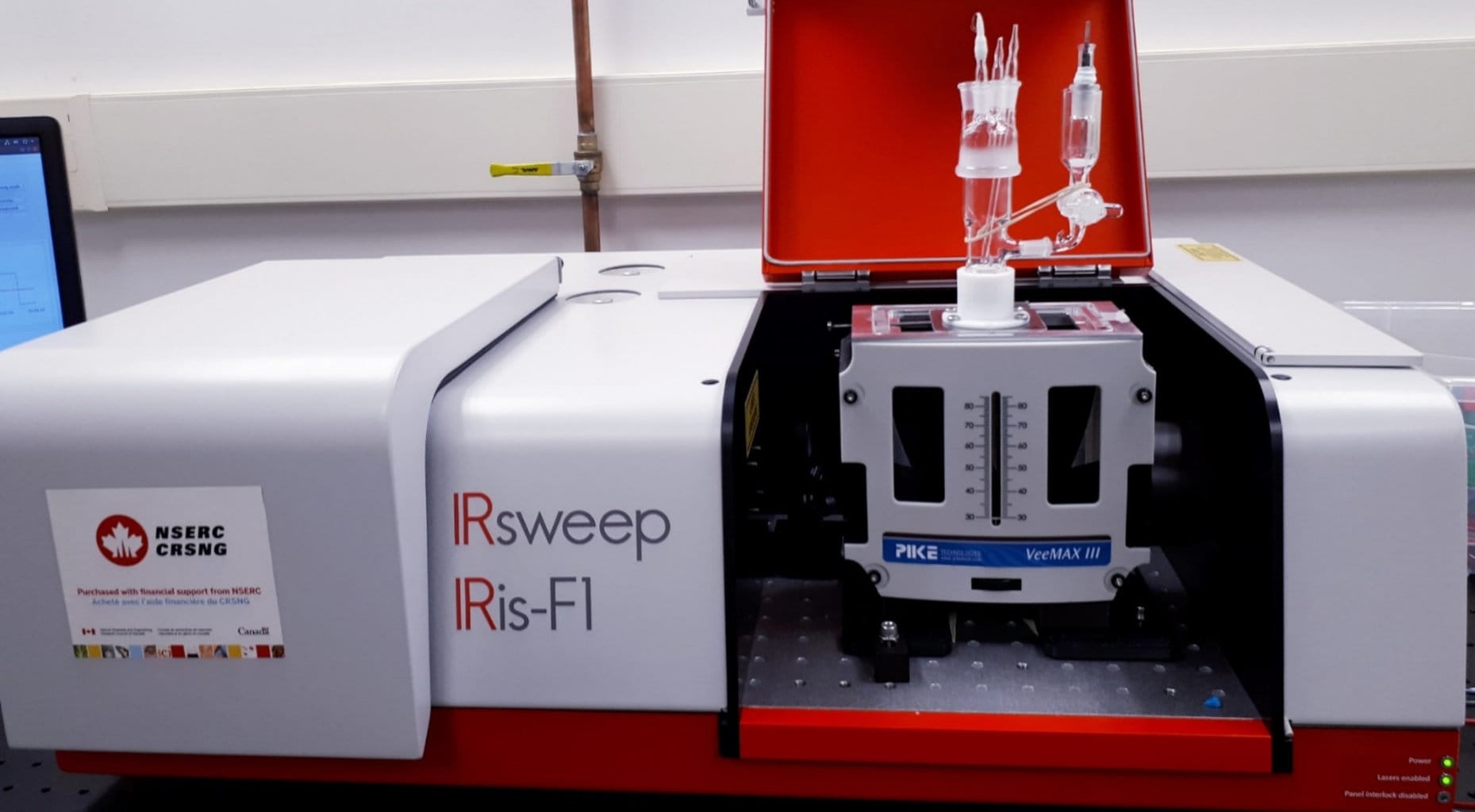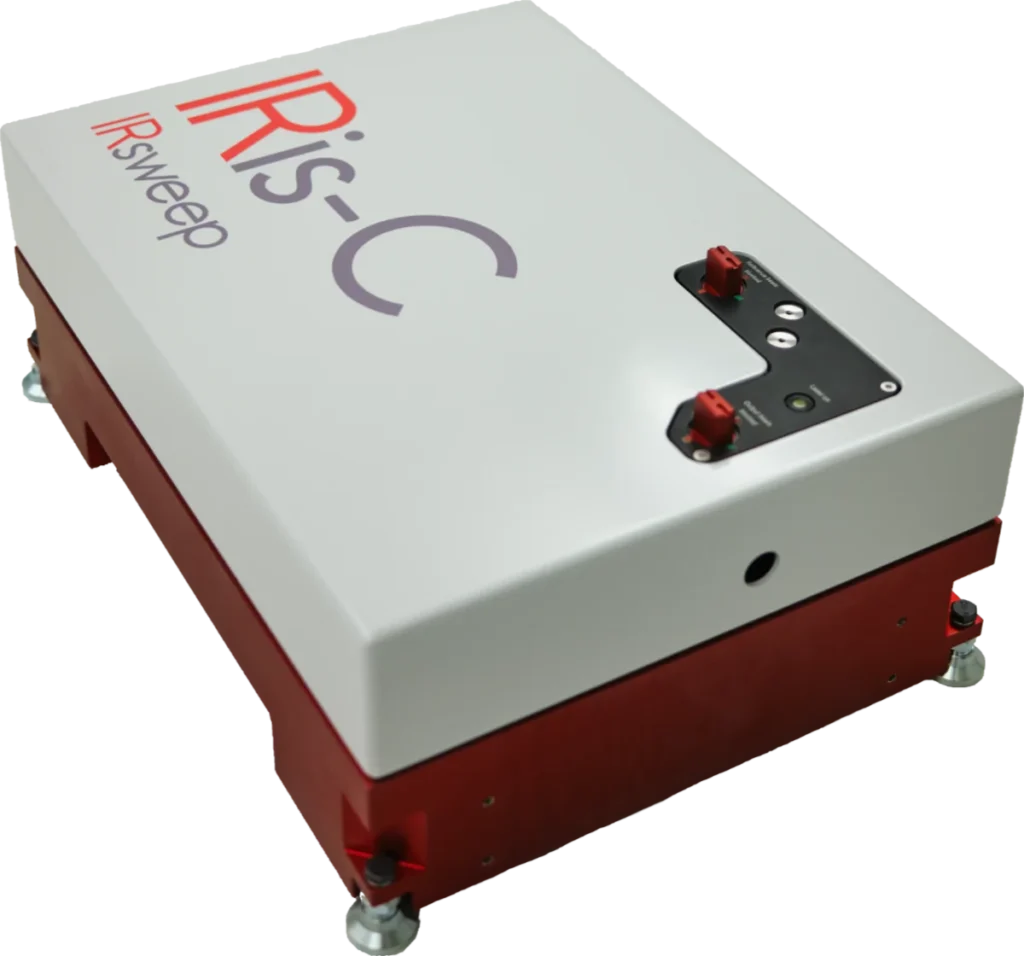
Infrared spectroelectrochemistry is of great value for monitoring the composition during an electrochemical reaction. To observe the transient response to an electrical potential change, sub-millisecond time resolution is commonly required. For infrared measurements, this was so far only possible with single wavelength sources or step-scan FTIR spectroscopy.
Dual-comb spectroscopy opens completely new possibilities for infrared spectroelectrochemistry. Thanks to the simultaneous multi-wavelength detection, DCS enables studies of the time evolution of multiple molecular absorption features with microsecond time resolution. Thereby, measurement times are reduced by orders of magnitude as compared to a step-scan FTIR experiment. This allows to do parameter sweeps where previously a single experiment used up a full day.
Recently, the potential dependent desorption of a monolayer of a pyridine derivative with time resolution as high as 4 μs was achieved (Lins et al. 2020). The limit of detection was studied and found to be as low as 0.7% of a monolayer. While this result was achieved in only 32 minutes of measurement time, a comparable signal quality took more than 2 days of continuous measurements with an FTIR.
What our customers say about IRis-F1
QCL frequency combs has led to a paradigm change in TRVS IR spectroscopy. Now microsecond reaction monitoring becomes possible in the MID-IR.
Dr. Ian J. Burgess, University of Saskatchewan, Canada
Professor in the Chemistry Department



